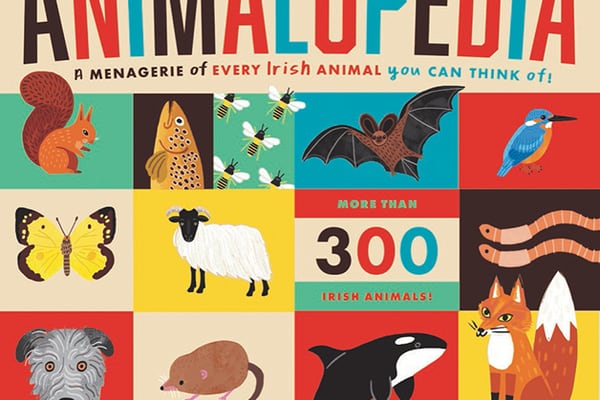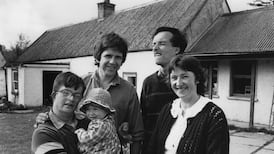The initial plan was to interview Brendan Gleeson in Dublin city centre. A chat over lunch in a local pub or restaurant, then a few photos of him in his element. His agents politely point out this is not ideal. Why not? “Because he’s Brendan Gleeson!” He can no more walk around the middle of Dublin incognito and uninterrupted than could Bono, or the pope.
So our rendezvous is relocated to a seafood restaurant at the end of a fishing pier in a village outside Dublin. But even here, within seconds of Gleeson posing for photographs outside, a passerby comes up to say hi. Moments later a woman shouts “Oi, Brendan!” from her car across the street and comes over for a selfie and a chat about local broadband provision. Gleeson is obliging, but his agents weren’t kidding.
Gleeson has been a screen fixture for more than 30 years, an anchor of the Irish film and television industry who has also worked with the best in the business internationally: Spielberg, Scorsese, Anthony Minghella, Ridley Scott, Danny Boyle, the Coen brothers, you name it. He has played Donald Trump and Winston Churchill. He’s a versatile actor, guaranteed to bring a bit of humanity and dramatic heft, more often than not spiced with a hint of menace, or at least grumpiness.
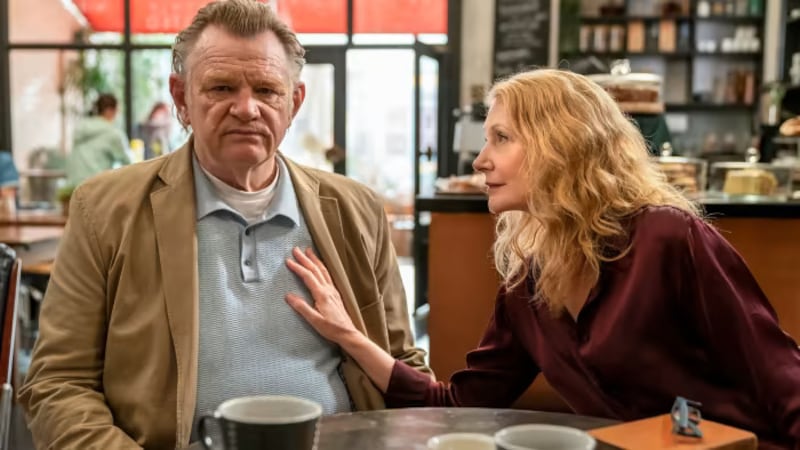
No wonder, then, especially after he took on the character of Mad-Eye Moody in the Harry Potter films, that anonymity has been hard to find in Ireland. “I remember Robbie Coltrane saying to me, ‘You can forget about walking through an airport again’,” Gleeson says over lunch. “It’s difficult to browse in a shop. It’s a big price to pay, and I don’t like it.”
READ MORE
It’s not that he doesn’t like people, he says; it’s more that he does like them. “It’s stopped me from being able to people-watch with any great success and comfort. And that’s part of what you really need to do to stay aware of what’s going on.”
In real life Gleeson is neither menacing nor grumpy. He’s so talkative he barely remembers to eat his lunch. He apologises several times for “rambling on”. And he’s serious — until he isn’t. When I tell him his movie Calvary moved me to tears when I recently rewatched it, he immediately replies: “That bad, was it?” You rarely see him laugh on screen, but when he does it’s with his whole face. His eyes narrow and twinkle and his grin is a mile wide.
This is exactly the reaction when I ask him about his latest role, and how close it is to the real him: “Ha ha! Ask my wife.” The role is Scott, a somewhat curmudgeonly middle-aged man who is going through a divorce. The show is State of the Union, written by Nick Hornby and directed by Stephen Frears. It’s a bittersweet little comedy series of 10 10-minute encounters between a couple about to go into their weekly marriage counselling session. In the first season (which won three Emmys), the couple was Chris O’Dowd and Rosamund Pike.
This time, it’s Gleeson and Patricia Clarkson. From the outset, Clarkson’s Ellen is ready to move on. Gleeson’s Scott has apparently not moved on since about 1975. He’s looking forward to retirement, golf and fishing; she’s keeping up with yoga and progressive politics.
“It should come with a health warning in the corner: ‘Any couple who watches it, this could end in divorce,’” Gleeson says, his face consumed by laughter again. “I’ve had friends of mine saying, ‘Jesus. I was looking forward to playing a bit of golf when I retired.’”
It made a few ripples in his own marriage, he admits. Gleeson and his wife, Mary, have been married for 40 years and have four grown-up sons, including the actors Domhnall and Brian. He started rehearsing for State of the Union at home, reading the script with his wife. “Myself and Mary used to sit down, and she’d say things like, ‘I’d kill that fella.’ And of course, if you’re playing a part, you have to go into their corner. You have to fight for them. And … there was a spillover. We actually did start fights!” He’s laughing at the memory of it. “Some things [about Scott] are fundamentally against the way I am. So just to establish that. But some of the things, I would say: ‘Hang on a second’ — which would start the row with Mary — ‘he does have a point’.”
For extra friction, State of the Union takes place in the type of coffee shop that doesn’t serve cow’s milk or even use the word “coffee” — it’s all “Peruvian special blend”. The barista, Jay (Esco Jouléy), is black, non-binary and asexual. Predictably, Scott and Jay get off to a bad start. It would be easy to label Scott as a privileged, white, middle-aged, cis, male bigot, as his wife does, but then Jay is not exactly pleasant to him either. Gleeson praises the way both sides are called out for their assumptions.
“This blanket kind of pardon for everybody, because they are part of a group that had been discriminated against, while laudable in the beginning, it doesn’t hold water,” he says. “Because it’s a ludicrous concept. There are people who are deeply flawed in every single corner of humanity.” Through the 10 episodes, Scott and Jay’s relationship develops into something more interesting. Scott might be lazy and blinkered but he’s actually not a bigot, Gleeson suggests. “That’s what I thought was the most beautiful part of him.”
[ Brendan Gleeson: ‘It never crossed my mind I could be a movie star’Opens in new window ]
Doing the show has put Gleeson on a personal learning curve. He had never worked with non-binary people before, he says. “I did not use the pronouns ‘them/they’ for gender-fluid people because I haven’t been in a situation where it was either expected or demanded or, in fact, even introduced as a possibility. So with Esco I kept, and I still do, just going to the wrong pronoun.” He then does it straight away: “But he — they! — said: ‘I don’t care. I find it interesting who you see me as today.’”
Gleeson freely admits he found Jouléy’s non-binary identity a challenge at first. “He” — he means “they” — “used to dress differently and present himself differently every episode, which was fascinating.” But also confusing. The tendency to mentally assign gender to people you meet is hard to shake when you’re 67, he suggests. “Finally I got it, and it was exhilarating. It was thrilling to be brought into a new awareness in that way.”
Gleeson can understand the tendency in men to just slow down and stop learning as they approach retirement age — more so than women, perhaps: “There is nothing wrong with just sitting back and smelling the coffee.” Even if it’s Peruvian special blend, perhaps. But that doesn’t seem to apply to him personally. He’s as busy as ever. Or at least as busy as he wants to be.
The dialogue recording he was doing in Dublin this morning was for The Banshees of Inisherin, his long-awaited reunion with Colin Farrell and the writer and director Martin McDonagh. The last time the three of them worked together was 14 years ago on In Bruges, an odd-couple comedy about hitmen hiding out in the Belgian town, and a high point of modern Irish cinema. All he can say about the new film is that it’s “about two friends going in two different directions and the pain of it”.
McDonagh and his older brother, John Michael McDonagh, have provided quite a few of these high points of modern Irish cinema, and Gleeson has figured in most of them. It began with Martin’s Oscar-winning short Six Shooter in 2004. With John, Gleeson made 2011′s The Guard — a different type of odd-couple comedy, with Don Cheadle — and 2014′s Calvary, in which he plays a kindly village priest who is condemned to die for the sins of the Catholic church. Between them, the McDonagh brothers seem to have found a rich seam of Irish storytelling, balancing earthy comedy and even action thrills with trickier spiritual and existential questions. It’s a tone Gleeson seems perfectly suited to. Do they take it in turns? Do they argue over him?
“No, they don’t fight over me!” All the same, he’s discreet about them. “To try to explain two brothers, and then to meet the two brothers, would be a very, very silly thing to do.”
Working with McDonagh and Farrell again was a delight. “We had all learned a little bit, maybe, in the meantime and matured in different ways, but ultimately, the centre of everything was absolutely as if In Bruges happened yesterday.”
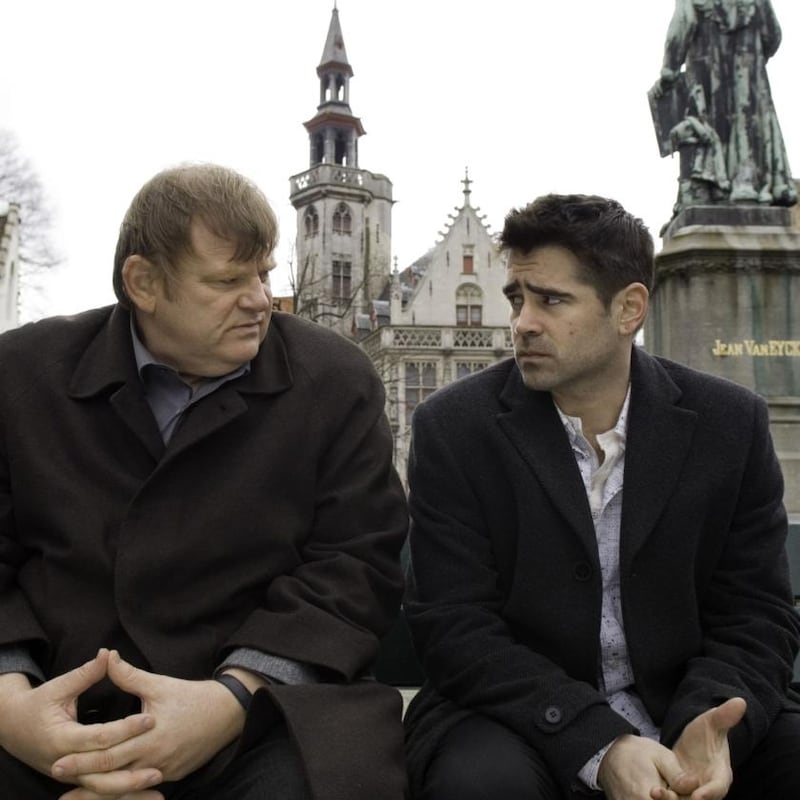
This could be his last collaboration with McDonagh, Gleeson says with some regret: “His muse will take him elsewhere.” After the success of In Bruges, McDonagh migrated to Hollywood, where he struck Oscar gold with 2017′s Three Billboards Outside Ebbing, Missouri. “Was I aggrieved I wasn’t in it? No! Was I jealous? Yes. Would I like to have been in it? Of course. But I understand why not, too.”
Gleeson can take it at this stage in his career. He started late: he did not take up full-time acting until he was 34. Before that he was a teacher. He had performed on stage since school days, and continued acting in independent groups including Paul Mercier’s revolutionary Passion Machine theatre company, which specialised in accessible, original stories of modern Irish life. “I really did think that the professional stage was for other people,” he says. “I’m not sure why, it just felt as if it was a little … exotic. And I would go then to plays and think, I’m not sure that was the right take on that at all. I kind of felt like, I could do better than that.”
He could. He graduated from stage to screen, including a part in Glenroe. That was his first taste of celebrity. A stronger dose came in 1995, with Braveheart, in which he played Mel Gibson’s stalwart, rock-throwing sidekick Hamish. This was back when Gibson was a major force in cinema, with a relatively unblemished copybook. He was “a force of nature”, Gleeson says. “He had a really collaborative spirit, very driven, very much in charge, but his energy levels were unbelievable.” He’s still proud of the film, if not his part in it. “I didn’t really realise I was supposed to lose any weight. I think Mel assumed I would have known that I had to be all buffed up and stuff like that.”
Gleeson’s next big hit was 1998′s The General, for which John Boorman won best director at Cannes. Gleeson played the notorious Dublin criminal Martin Cahill — a charming but intimidating character, the first of many Gleeson would play. When I observe that he often plays menacing characters, he jokes: “That’s because I haven’t got a pretty face, you see.”
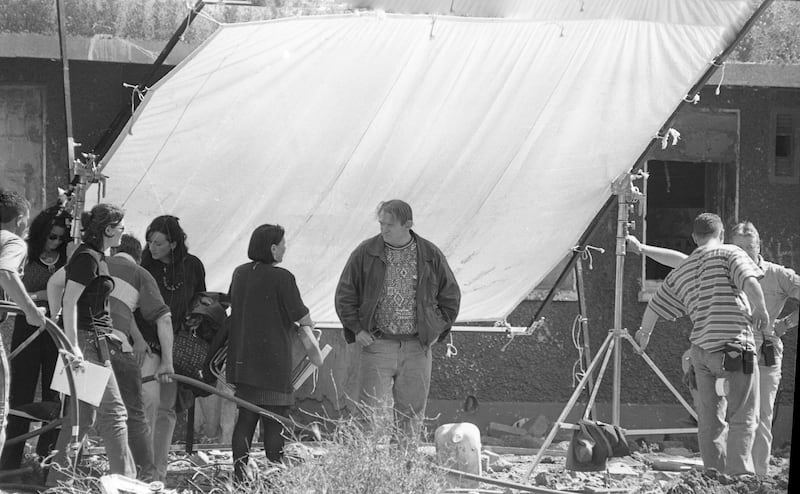
He credits Boorman with helping him tap into his mean side when they started preparing for The General. “He said I was doing a good mimicry, but I had to go deeper than that. I didn’t quite understand what he meant. And then between that and the start of filming, I started to get really bad dreams.”
Things that had happened in his childhood resurfaced. Dublin was not always a safe place to grow up.
“Things like bullying, a fella set a dog on me one time, or I got knocked down by a bus on my way to school. Little bits of things like that, but I suddenly started accessing that whole area of intimidation, nightmares and stuff. That’s where you have to go.” So if anything, Gleeson’s capacity for menace comes from having been on the receiving end of it. “It’s not difficult for me, because I saw it coming at me.”
Gleeson has played against his menacing persona to fine effect, both in the Harry Potter movies and in that other modern children’s classic, Paddington 2, where he portrayed Knuckles McGinty, the grouchy prison cook and chief bruiser (whose softer side is brought out by Paddington’s transformative marmalade). He hasn’t yet seen the recent Nicolas Cage movie The Unbearable Weight of Massive Talent, which includes a running gag about how Paddington 2 is one of the greatest movies ever made. “They’re absolutely right though,” he says. “That is a perfect movie! Honestly I’m as proud of that as anything I’ve done.”
Gleeson’s career may not be slowing down, but he’s more relaxed about it than he used to be. “I don’t want to bother trying to make a silk purse out of a sow’s ear at all at this point.” He’s become better at taking a little time to smell the coffee. At least until something like State of the Union, or a McDonagh brother, or Paddington 2 comes along.
“The excitement you get when you get something through the door that absolutely sings. And that you have to rise to it, rather than trying to drag it up by its bootstraps. When I smell it, when it jumps through the window, it’s just not going to go away.” You can have a fulfilling career and smell the coffee, he suggests. “Curiosity is the thing, I think. That’s where I am at the moment.” — Guardian
State of the Union is on BBC Two on Tuesdays at 10pm




